Home>Storage Ideas>Kitchen Storage>10 Things To Do Daily To Keep Kitchen Counters Clear
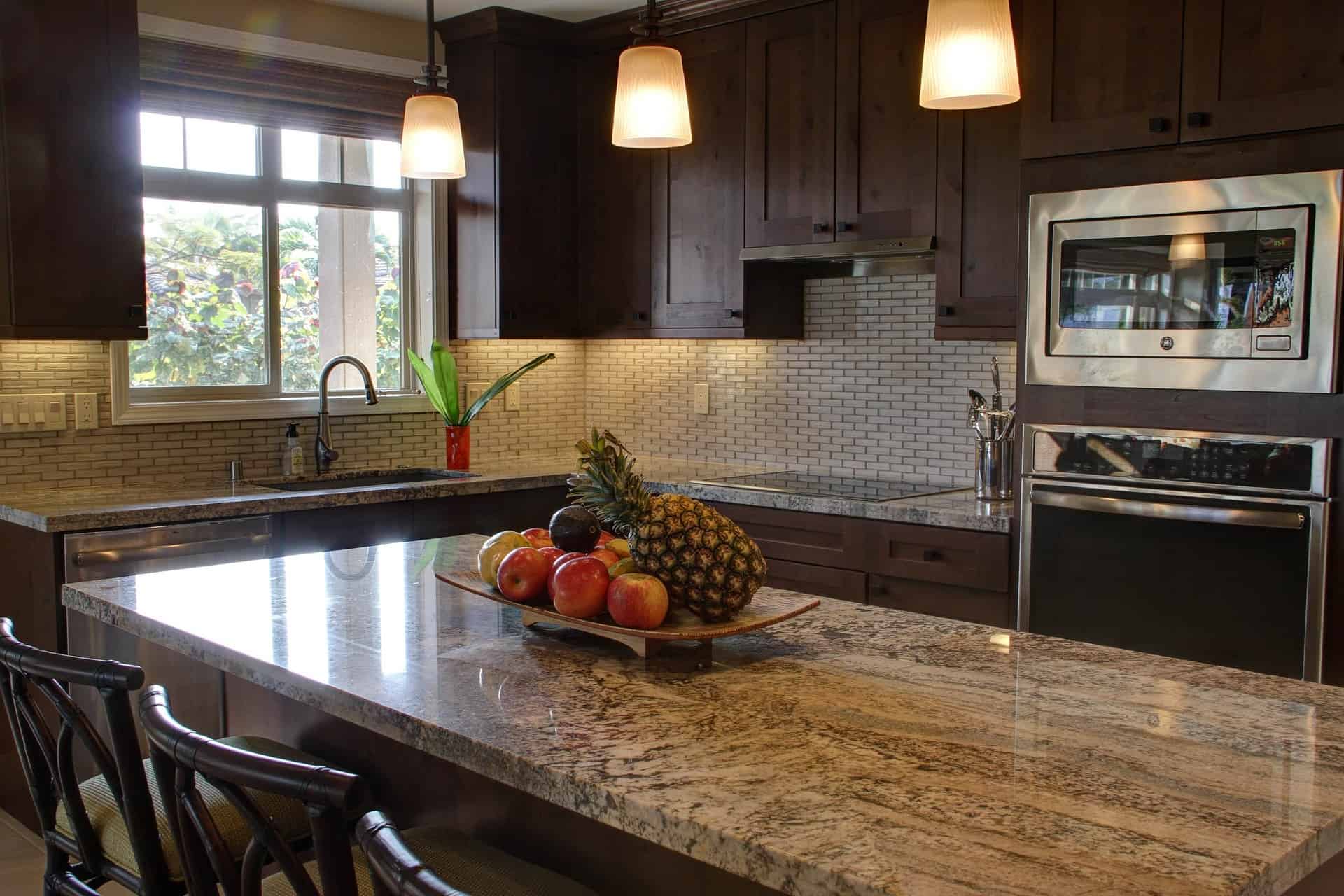

Kitchen Storage
10 Things To Do Daily To Keep Kitchen Counters Clear
Modified: January 20, 2024
Implement these 10 kitchen storage ideas to effortlessly maintain clutter-free countertops every day. Discover effective ways to optimize kitchen organization for a tidy and functional space.
(Many of the links in this article redirect to a specific reviewed product. Your purchase of these products through affiliate links helps to generate commission for Storables.com, at no extra cost. Learn more)
Clear Away Dishes Immediately After Each Meal
Keeping a clutter-free kitchen is essential for maintaining a functional and organized space. One of the simplest yet most effective ways to achieve this is by clearing away dishes immediately after each meal. When dishes are left sitting on the kitchen counters, it not only creates a messy appearance but also makes it difficult to use the counters for other purposes, such as meal preparation or cooking.
Here are some reasons why clearing away dishes promptly after each meal is so important:
- Promotes cleanliness: Leaving dirty dishes piled up can lead to a buildup of bacteria and unpleasant odors. By clearing them away and cleaning them promptly, you can maintain a hygienic kitchen environment.
- Saves time: Taking a few minutes after each meal to clear away dishes not only keeps your kitchen tidy but also saves you time in the long run. You won’t have to spend extra time later on tackling a large pile of dishes.
- Prevents pests: Dirty dishes left out can attract pests like ants, cockroaches, and flies. By promptly clearing away dishes and cleaning up any food residue, you can minimize the risk of unwanted critters invading your kitchen.
- Improves kitchen organization: Having a clean and clear countertop allows you to utilize the space more efficiently. It becomes easier to find and access the items you need when cooking or preparing meals.
- Enhances visual appeal: A cluttered kitchen can be visually overwhelming and make the space feel chaotic. By clearing away dishes promptly, you can create a more inviting and aesthetically pleasing atmosphere in your kitchen.
To effectively clear away dishes after each meal, follow these simple steps:
- Gather the dishes: Collect all the dishes from the dining table, kitchen island, and any other surfaces in the kitchen.
- Scrape off food residue: Use a spatula or your hands to remove any leftover food from the dishes and dispose of it in the trash or compost bin.
- Load the dishwasher: If you have a dishwasher, place the dishes, glasses, and silverware into the dishwasher racks. Be mindful of any specific loading instructions to ensure optimal cleaning.
- Wash by hand: If you don’t have a dishwasher or have items that require handwashing, fill the sink with warm soapy water and wash the dishes. Rinse them thoroughly and place them on a drying rack.
- Wipe down counters: After the dishes are taken care of, use a damp cloth or disinfectant wipes to wipe down the kitchen counters, removing any crumbs or spills.
By following these simple steps and making it a habit to clear away dishes immediately after each meal, you can maintain a clean, organized, and functional kitchen space. Plus, it will make your cooking and meal prep experiences much more enjoyable and efficient!
Key Takeaways:
- Clear away dishes immediately after each meal to promote cleanliness, save time, prevent pests, improve kitchen organization, and enhance visual appeal. Follow simple steps to maintain a clean, organized, and functional kitchen space.
- Regularly wipe down kitchen counters with disinfectant to kill germs, prevent cross-contamination, remove stains and spills, reduce odors, and improve overall cleanliness. Incorporate countertop cleaning into your routine for a clean and germ-free kitchen.
Read more: 10 Things You Can Clean With The Pink Stuff
Wipe Down Counters with Disinfectant
Keeping your kitchen counters clean and free from germs is essential for maintaining a healthy and hygienic cooking environment. One of the most effective ways to accomplish this is by regularly wiping down your counters with a disinfectant. This simple task not only helps prevent the spread of bacteria but also keeps your kitchen looking fresh and inviting.
Here’s why regularly wiping down your kitchen counters with a disinfectant is so important:
- Kills germs and bacteria: Kitchen counters can harbor harmful bacteria such as E.coli and Salmonella, which can cause foodborne illnesses. By using a disinfectant, you can effectively eliminate these germs, ensuring that your kitchen surfaces are safe.
- Prevents cross-contamination: Countertops are often used for various food prep activities, including cutting raw meats and vegetables. Wiping down the counters with a disinfectant after each use helps prevent cross-contamination between different types of food, minimizing the risk of foodborne illnesses.
- Removes stains and spills: Kitchen counters are prone to stains and spills from food, beverages, and cooking ingredients. Regularly wiping them down with a disinfectant helps remove these stains and spills, keeping your counters looking clean and presentable.
- Reduces odors: Some food items, especially strong-smelling ingredients like onions and garlic, can leave lingering odors on your countertops. Wiping them down with a disinfectant not only cleans the surface but also helps neutralize any unpleasant odors.
- Improves overall cleanliness: A clean and well-maintained kitchen is both visually appealing and inviting. By regularly wiping down your counters with a disinfectant, you enhance the overall cleanliness and hygiene of your kitchen space.
To effectively clean and disinfect your kitchen counters, follow these steps:
- Clear the counters: Remove any items, such as small appliances, utensil holders, or decorative items, from the countertops to ensure easy access to all areas.
- Prepare the disinfectant solution: Dilute the disinfectant according to the instructions on the label. You can use store-bought disinfectant sprays or make your own solution using household products like vinegar or hydrogen peroxide.
- Spray and wipe: Spray the disinfectant solution onto the countertop surface, making sure to cover all areas. Use a clean cloth or paper towel to gently wipe the surface in a back-and-forth motion. Pay extra attention to areas that are frequently used, such as around the sink or stove.
- Let it sit: Allow the disinfectant to sit on the countertop surface for a few minutes to effectively kill any lingering bacteria or germs. Check the instructions on the disinfectant product for the recommended contact time.
- Wipe dry: After the appropriate contact time, use a clean, dry cloth or paper towel to wipe the countertop surface dry. This step helps remove any remaining disinfectant residue and prevents streaking.
By incorporating regular countertop cleaning and disinfection into your cleaning routine, you can maintain a clean, germ-free, and visually appealing kitchen. Remember to follow the manufacturer’s instructions for any disinfectant products and establish a regular schedule to ensure that your countertops stay clean and fresh.
Put Away Appliances After Use
In a busy kitchen, appliances can easily accumulate on the countertops, taking up valuable space and making your kitchen look cluttered. To maintain a clean and organized kitchen, it’s important to put away appliances after use. Not only does this create a more visually appealing space, but it also makes your kitchen more functional and efficient.
Here are several reasons why putting away appliances after use is essential:
- Declutters the countertops: When appliances are left out on the countertops, it can make the space feel crowded and disorganized. Putting them away creates more room for meal preparation and other kitchen activities.
- Enhances workspace efficiency: Clear countertops provide ample workspace for chopping, mixing, and other tasks. By putting away appliances, you can optimize the available space and have a dedicated area for cooking and meal prep.
- Reduces visual distractions: A cluttered kitchen can be visually overwhelming and make it harder to focus on cooking. By putting away appliances, you create a clean and visually appealing environment that promotes a sense of calm and concentration.
- Prevents wear and tear: Appliances left out on the countertops are more exposed to accidental spills, scratches, and damage. By putting them away, you can protect your appliances and extend their lifespan.
- Keeps appliances clean: Dust and food particles can easily accumulate on appliances that are left out. By storing them in cabinets or drawers, you can keep them free from dirt, grease, and other contaminants, making cleaning easier and more effective.
To effectively put away appliances after use, consider the following tips:
- Evaluate appliance usage: Take a close look at the appliances you have in your kitchen and determine which ones you use regularly versus those that are seldom used. Consider decluttering and donating or storing appliances that are rarely or never used.
- Create dedicated storage space: Designate specific areas in your cabinets or pantry to store each appliance. Organize them in a way that makes sense for your workflow and convenience, placing frequently used appliances within easy reach.
- Wrap cords neatly: When storing appliances with cords, take the time to neatly wrap them to prevent tangling and tripping hazards. Using twist ties or cord organizers can help keep things tidy and manageable.
- Utilize appliance garages: If you have larger appliances like blenders or toasters that are used daily, consider investing in appliance garages. These specially designed cabinets or nooks keep appliances accessible while keeping them hidden from view when not in use.
- Clean appliances before storing: Take a moment to wipe down and clean appliances before putting them away. This ensures that they are ready to use the next time you need them and prevents any food residue or stains from transferring onto other items in storage.
By incorporating the habit of putting away appliances after use into your daily kitchen routine, you can create a clean and organized space that is both visually appealing and functional. You’ll enjoy the benefits of a clutter-free countertop and a more efficient kitchen workflow.
Store Non-Essential Items in Cabinets or Drawers
A clutter-free kitchen not only looks tidy, but it also promotes efficiency and a sense of calm while you cook and prepare meals. One effective strategy for achieving this is to store non-essential items in cabinets or drawers. By keeping countertops clear of unnecessary items, you create a more organized and functional space in your kitchen.
Here are several reasons why storing non-essential items in cabinets or drawers is important:
- Maximizes workspace: Countertop space is valuable real estate in the kitchen. By storing non-essential items in cabinets or drawers, you free up this space and create more room for meal preparation, cooking, and other kitchen activities.
- Reduces visual clutter: A cluttered countertop can be visually overwhelming and make it harder to focus on cooking. By storing non-essential items, you create a clean and visually pleasing environment that allows you to better concentrate on the task at hand.
- Easier cleaning: Countertop cleanup becomes quicker and more efficient when there are fewer items to maneuver around. Storing non-essential items in cabinets or drawers simplifies the cleaning process and helps maintain a hygienic kitchen.
- Protects items from damage: Leaving non-essential items exposed on the countertop increases the chance of accidental spills, breakage, or damage. Storing them in cabinets or drawers helps protect these items and keep them in good condition for longer.
- Promotes organization: Having a dedicated storage space for non-essential items makes it easier to keep things organized. Clearing the countertops allows you to assign specific spots for each item, making it simpler to find what you need when you need it.
To effectively store non-essential items in cabinets or drawers, consider the following tips:
- Declutter regularly: Before storing non-essential items, take the time to declutter and get rid of anything you no longer use or need. This helps create more space and ensures that you’re only storing items that are truly useful.
- Create zones: Organize your cabinets and drawers into zones based on functionality or categories. For example, designate one drawer for baking supplies, another for small appliances, and a separate cabinet for food storage containers.
- Use organizers and dividers: Invest in cabinet and drawer organizers to maximize space and keep items organized. Utilize dividers to create separate sections for different items, ensuring that everything has its place and is easily accessible.
- Label containers and shelves: Labeling containers and shelves can help you quickly find what you’re looking for and keep items organized. This is especially helpful for spices, pantry items, or other small items that can easily get mixed up.
- Consider vertical storage: Make use of vertical space in your cabinets by adding shelves or racks. This can help accommodate more items and make better use of the available storage space.
By adopting the practice of storing non-essential items in cabinets or drawers, you can create a clean and organized kitchen that maximizes your workspace and makes cooking and meal prep more enjoyable. Enjoy the benefits of a clutter-free countertop and a more efficient cooking experience in your kitchen!
Sort Mail and Papers Daily
In many households, the kitchen becomes a central hub for organizing paperwork, including mail, bills, and other important documents. However, allowing these items to accumulate on the countertops can quickly lead to clutter and disorganization. To maintain a clean and functional kitchen, it’s crucial to sort mail and papers daily and establish a system for organizing and managing them.
Here are several reasons why sorting mail and papers daily is important:
- Reduces paper clutter: When mail and papers pile up, it can quickly take over your kitchen countertops, making it difficult to find space for meal preparation and other daily activities. Sorting them daily ensures that paper clutter is kept to a minimum.
- Promotes organization: Sorting mail and papers regularly allows you to stay on top of important documents and prevents them from getting lost or misplaced. By establishing an organized system, you can quickly find what you need when you need it.
- Avoid missing important information: Sorting mail and papers promptly ensures that you don’t miss out on important deadlines, due dates, or information. It allows you to stay current with bills, invitations, and other time-sensitive documents.
- Prevents accumulation of unnecessary items: Sorting mail daily allows you to quickly identify and discard any junk mail or unwanted promotional materials, preventing them from cluttering your kitchen and wasting your valuable time and energy.
- Keeps sensitive information secure: Sorting and properly storing important documents, such as financial statements or personal information, helps keep sensitive information secure and protects you from potential identity theft.
To effectively sort mail and papers daily, consider the following tips:
- Create a dedicated sorting area: Designate a specific area in your kitchen for sorting mail and papers, such as a desk or countertop. Having a designated spot helps keep everything organized and prevents papers from spreading throughout the kitchen.
- Open mail immediately: Upon receiving mail, open it immediately and sort it into different categories, such as bills, personal correspondence, or invitations. Discard any unwanted items into a recycling bin or shredder as needed.
- Establish a filing system: Create a filing system that works for you to store and organize important papers. Use labeled folders or file organizers to sort documents by category or urgency. This will help you easily locate important information when needed.
- Scan and digitize: Consider scanning or digitizing important documents to reduce paper clutter further. This allows you to store digital copies and access them conveniently from your computer or other electronic devices.
- Set aside time for financial tasks: Schedule regular time to handle bill payments, budgeting, and financial tasks related to the sorted mail. By establishing a routine, it becomes easier to stay on top of your finances and avoid any late fees or missed payments.
By incorporating the habit of sorting mail and papers daily into your kitchen routine, you can maintain a clean, organized, and efficient space. Enjoy the benefits of a clutter-free countertop and a stress-free approach to managing important paperwork in your kitchen!
Designate a specific spot for incoming mail and papers, and deal with them immediately to prevent clutter from building up on your kitchen counters.
Empty and Clean the Sink Regularly
The kitchen sink is one of the most frequently used areas in any home. It serves as the primary location for washing dishes, preparing food, and cleaning various kitchen items. However, if left unattended, the sink can quickly become a breeding ground for bacteria and cause unpleasant odors in the kitchen. To maintain a clean and sanitary environment, it’s important to regularly empty and clean the sink.
Here are several reasons why emptying and cleaning the sink regularly is crucial:
- Prevents bacterial growth: Food particles, residue, and moisture can quickly accumulate in the sink, creating an ideal breeding ground for bacteria. Emptying and cleaning the sink eliminates the potential for harmful bacterial growth and ensures a hygienic environment for food preparation and dishwashing.
- Eliminates odors: Lingering food particles can produce unpleasant odors in the sink. Regularly cleaning and deodorizing the sink helps eliminate these odors, ensuring a fresh and inviting kitchen space.
- Maintains functionality: A clogged or dirty sink can impede proper drainage and cause water to stagnate. By regularly emptying and cleaning the sink, you ensure that it functions optimally and prevents any potential plumbing issues.
- Prevents stains and discoloration: Certain foods, beverages, and cleaning agents can stain or discolor the sink if left for too long. By regularly cleaning the sink, you can remove any stains or discoloration, keeping it looking clean and pristine.
- Improves overall kitchen cleanliness: The sink is a focal point in the kitchen, and a clean sink contributes to a visually appealing and clean overall kitchen environment. Regularly emptying and cleaning the sink enhances the cleanliness and aesthetics of your kitchen space.
To effectively empty and clean the sink regularly, consider following these steps:
- Remove dishes and debris: Begin by removing any dishes, utensils, or debris from the sink. Place dirty dishes in the dishwasher or hand wash them, and dispose of any food scraps in the trash or compost bin.
- Rinse the sink: Use warm water and a sponge or cloth to thoroughly rinse the sink, removing any remaining debris or loose food particles. Pay close attention to corners, crevices, and drains where residues may accumulate.
- Apply a cleaning solution: Depending on the material of your sink (such as stainless steel or porcelain), use an appropriate cleaning solution. You can opt for commercial sink cleaners or make your own natural cleaning solution using ingredients like vinegar or baking soda.
- Scrub the sink: Use a non-abrasive sponge, cloth, or brush to scrub the sink, focusing on areas with stains or discoloration. Ensure that you cover the entire surface, including the sides and bottom of the sink. Rinse thoroughly with water.
- Deodorize, if necessary: If your sink has any unpleasant odors, consider deodorizing it. You can do this by pouring a mixture of baking soda and vinegar or lemon juice down the drain and letting it sit for a few minutes before rinsing with water.
- Dry the sink: After cleaning, use a clean towel or cloth to dry the sink thoroughly. This helps prevent water spots or mineral buildup, keeping the sink looking sparkling clean.
By incorporating the habit of regularly emptying and cleaning the sink into your kitchen routine, you can maintain a clean, sanitary, and visually appealing kitchen space. Enjoy the benefits of a fresh and functional sink as you go about your daily kitchen tasks!
Sweep or Vacuum the Kitchen Floor
The kitchen floor is often subjected to spills, crumbs, and daily foot traffic, making it prone to dirt and debris buildup. To maintain a clean and hygienic kitchen, it’s important to regularly sweep or vacuum the kitchen floor. This simple task not only helps keep the space looking tidy but also ensures a healthier environment for food preparation and everyday activities.
Here are several reasons why sweeping or vacuuming the kitchen floor is essential:
- Removes dirt and debris: Daily foot traffic can track dirt, dust, and other debris onto the kitchen floor. Sweeping or vacuuming effectively removes these particles, preventing them from spreading and accumulating in other areas of the kitchen.
- Prevents food contamination: Food crumbs and spills are inevitable in the kitchen. Regularly sweeping or vacuuming the floor helps prevent attracting pests, such as ants or cockroaches, and minimizes the risk of food contamination.
- Reduces allergens and pollutants: Dust, pet dander, and other allergens can settle on the kitchen floor, which can affect air quality. Sweeping or vacuuming the floor eliminates these particles, ensuring a cleaner and healthier environment, especially for those with allergies or respiratory issues.
- Prevents slip and fall accidents: An unclean kitchen floor can become slick and potentially hazardous. Regularly removing dirt and spills through sweeping or vacuuming helps maintain a safe and slip-resistant surface, reducing the risk of accidental falls.
- Enhances kitchen aesthetics: A clean and well-maintained kitchen floor contributes to the overall visual appeal of the space. Regular sweeping or vacuuming helps keep the floor looking clean and presentable.
To effectively sweep or vacuum the kitchen floor, consider following these steps:
- Clear the floor: Remove any chairs, stools, or other obstacles from the kitchen floor to ensure unobstructed access.
- Sweep or use a vacuum: Depending on your preference and the type of flooring, choose between sweeping with a broom and dustpan or using a vacuum cleaner. Make sure to reach all corners and edges of the kitchen floor.
- Pay attention to high-traffic areas: Focus on areas that receive the most foot traffic and are more likely to accumulate dirt and debris, such as near entrances, the stove, and the sink.
- Spot clean as needed: If you encounter any spills or sticky spots while sweeping or vacuuming, take a moment to spot clean them using a suitable cleaning solution and a cloth or mop.
- Dispose of collected debris: Empty the dustpan or vacuum canister into a trash bag or bin and dispose of the collected debris appropriately.
- Maintain a regular schedule: Establish a regular cleaning schedule that includes sweeping or vacuuming the kitchen floor. This will help ensure that the floor remains clean and free from dirt and debris.
By incorporating the habit of regularly sweeping or vacuuming the kitchen floor into your cleaning routine, you can enjoy a clean, safe, and visually appealing kitchen environment. Say goodbye to dirt and debris, and welcome a fresh and inviting kitchen floor that complements the rest of your clean space!
Put Utensils and Dishes in the Dishwasher or Hand Wash Them
The proper handling of utensils and dishes is essential for maintaining a clean and hygienic kitchen. Whether you have a dishwasher or prefer to hand wash your dishes, it’s important to establish a routine of putting utensils and dishes in the appropriate cleaning method. This not only ensures that your kitchenware is free from food particles and bacteria but also maintains the overall cleanliness and functionality of your kitchen.
Here are several reasons why putting utensils and dishes in the dishwasher or hand washing them is crucial:
- Removes food residue: Putting utensils and dishes in the dishwasher or hand washing them removes food residue, preventing it from drying and becoming more difficult to clean. This reduces the risk of bacterial growth and keeps your kitchenware safe for use.
- Promotes sanitation: Dishwashers are designed to reach high temperatures that can effectively kill bacteria and sanitize your utensils and dishes. Hand washing, when done properly, also ensures that your kitchenware is clean and safe for use.
- Prevents cross-contamination: Separating utensils and dishes by cleaning method helps prevent cross-contamination. By keeping dishes that may have come into contact with raw meats or other potentially harmful ingredients separate from utensils, you minimize the risk of spreading and breeding bacteria.
- Preserves the condition of kitchenware: Using the appropriate cleaning method for your utensils and dishes helps preserve their quality and longevity. Dishwashers have designated racks and compartments to prevent damage, while proper hand washing techniques minimize the risk of breakage or scratching.
- Maintains a clean and organized kitchen: By promptly putting utensils and dishes in the dishwasher or hand washing them, you prevent them from piling up in the sink or on the countertops. This keeps your kitchen clean and organized, making meal preparation and cooking more efficient and enjoyable.
To effectively handle utensils and dishes, consider the following tips:
- Scrape off excess food: Before loading dishes into the dishwasher or preparing for hand washing, scrape off any large food particles or residue into the trash can or compost bin.
- Load the dishwasher properly: If using a dishwasher, arrange utensils and dishes according to the manufacturer’s instructions. Load them in the appropriate racks, facing downwards and ensuring that they are not overcrowded. Avoid blocking sprayer arms to allow for thorough cleaning.
- Select the appropriate dishwasher cycle: Depending on the degree of dirtiness and the type of utensils and dishes, choose the appropriate dishwasher cycle. Most dishwashers offer different settings such as light, normal, or heavy wash.
- Hand wash with care: If hand washing, fill the sink or a basin with warm soapy water. Start with washing glasses and delicate items first, followed by plates, bowls, and utensils. Use a non-abrasive sponge or cloth to clean, paying attention to any stubborn stains or residues. Rinse thoroughly with clean water.
- Air dry or towel dry: After dishwashing or hand washing, allow utensils and dishes to air dry or use a clean dish towel to gently dry them. Make sure they are completely dry before putting them away to prevent moisture buildup.
By establishing a routine of putting utensils and dishes in the dishwasher or hand washing them, you can maintain a clean, hygienic, and organized kitchen. Enjoy the benefits of clean and safe kitchenware as you go about your daily cooking and dining activities!
Declutter and Organize the Kitchen Counters Regularly
The kitchen is often the heart of the home, and having clutter-free and organized countertops is essential for a functional and visually appealing space. Regularly decluttering and organizing the kitchen counters can help create a clean and efficient environment, making meal preparation and cooking more enjoyable. By keeping your counters clear of unnecessary items, you can maximize workspace, enhance efficiency, and maintain a tidy kitchen area.
Here are several reasons why decluttering and organizing the kitchen counters regularly is important:
- Maximizes workspace: Clear countertops provide ample space for meal preparation, cutting, chopping, and other cooking activities. Decluttering and organizing the counters ensures that you have a clean and open workspace to work efficiently and safely.
- Reduces visual clutter: A cluttered kitchen counter can be visually overwhelming and make the space feel chaotic. By removing unnecessary items and organizing the essentials, you create a visually pleasing environment that promotes a sense of calm and order.
- Enhances efficiency: When your kitchen counters are clutter-free, it is easier to locate and access the necessary tools and ingredients. You can work with a smoother flow and complete tasks more efficiently, saving valuable time and energy in the process.
- Fosters cleanliness and hygiene: Cluttered countertops make it difficult to thoroughly clean the surface and remove food particles and spills. By decluttering and organizing the counters, you create a cleaner and more hygienic kitchen environment.
- Improves safety: Cluttered countertops increase the risk of accidents, such as knocking over objects or having limited space for working with hot pans or sharp knives. Keeping the counters clear of unnecessary items ensures a safer cooking and food preparation area.
To effectively declutter and organize the kitchen counters, consider the following tips:
- Start with a clean slate: Remove all items from the countertops and thoroughly clean the surface. This allows you to evaluate the available space and create a fresh starting point for organizing.
- Assess and categorize items: Sort through the items you have removed from the countertops and categorize them based on functionality or usage. Consider which items are essential for everyday use and which can be stored elsewhere.
- Create designated storage areas: Designate specific areas in your kitchen cabinets, drawers, or pantry to store different categories of items. Assign places for small appliances, cooking utensils, cutting boards, and other frequently used tools.
- Declutter and donate or discard: If you come across items that you no longer use or need, declutter and consider donating them or discarding them responsibly. Letting go of unnecessary items will free up valuable space on your countertops.
- Utilize organizers and containers: Invest in drawer dividers, cabinet organizers, and storage containers to maximize the use of space and keep items organized. Use these tools to group similar items together and make them easily accessible.
- Maintain a clutter-free routine: Make it a habit to regularly declutter and organize your kitchen countertops. Set aside time each week to assess and rearrange items as needed. By consistently maintaining a clutter-free routine, you can prevent the accumulation of unnecessary items on your counters.
By incorporating the habit of decluttering and organizing the kitchen counters regularly into your routine, you can create a clean, efficient, and visually appealing kitchen space. Enjoy the benefits of a clutter-free environment as you prepare meals and spend time in your kitchen!
Create a Daily Cleaning Routine for the Kitchen
Maintaining a clean and organized kitchen is essential for a healthy and functional cooking space. By creating a daily cleaning routine for the kitchen, you can stay on top of tasks and prevent dirt, stains, and clutter from accumulating. A well-planned routine will not only help keep your kitchen sparkling clean but also make cleaning more manageable and efficient.
Here are several reasons why having a daily cleaning routine for the kitchen is crucial:
- Promotes hygiene: Regular cleaning of kitchen surfaces, appliances, and utensils helps eliminate germs and bacteria, ensuring a hygienic environment for food preparation.
- Prevents foodborne illnesses: Thoroughly cleaning countertops, cutting boards, and equipment after each use reduces the risk of cross-contamination and the transmission of harmful bacteria, minimizing the chance of foodborne illnesses.
- Reduces odors: Daily cleaning prevents the build-up of food residues and other sources of odors, ensuring a fresh and pleasant-smelling kitchen.
- Maintains the condition of your kitchen: Regular cleaning and maintenance help prolong the lifespan of kitchen appliances, surfaces, and utensils, saving you from costly repairs or replacements.
- Enhances efficiency: A well-organized and clean kitchen allows for smooth and efficient meal preparation and cooking. Having a daily cleaning routine ensures that you have a clutter-free and functional workspace.
To create an effective daily cleaning routine for your kitchen, consider the following steps:
- Start with a clean slate: Begin each day with a tidy kitchen. Make sure all dishes are washed or loaded into the dishwasher and countertops are free from clutter.
- Wipe down surfaces: Use a damp cloth or disinfectant wipes to wipe down countertops, stove, and other frequently used surfaces. Pay special attention to areas where food spills or splatters are likely.
- Clean the sink: Empty and clean the sink regularly to prevent the accumulation of food residue and unpleasant odors. Use a mild cleanser, scrub the sink thoroughly, and rinse well.
- Wash dishes and utensils: Clean dishes, utensils, and cooking equipment promptly after use. If using a dishwasher, load them accordingly. If hand washing, use warm soapy water, scrub, and rinse well before air drying or towel drying.
- Sweep or vacuum the floor: Use a broom or vacuum to remove any dirt, crumbs, or debris from the kitchen floor. Pay attention to corners and hard-to-reach areas.
- Sanitize cutting boards: After each use, wash cutting boards with hot soapy water and sanitize them with a mixture of water and bleach or other appropriate sanitizing solutions to prevent cross-contamination.
- Organize and declutter: Regularly go through cabinets, drawers, and pantry to declutter and organize items. Put away items in their designated places and remove any expired or unused ingredients.
- Empty trash and recycling: Dispose of kitchen waste regularly to prevent odors and potential pest problems. Replace trash bags and ensure recycling is properly sorted.
- Do a quick inventory check: Take a moment each day to check inventory, making note of items that need restocking or replacing. This will help you stay organized and avoid running out of essential ingredients or supplies.
By following a daily cleaning routine for your kitchen, you can enjoy a clean, organized, and efficient space for cooking and dining. Remember to adapt the routine to your specific needs and preferences, and make it a habit to maintain a clean, inviting, and healthy kitchen environment.
Frequently Asked Questions about 10 Things To Do Daily To Keep Kitchen Counters Clear
Was this page helpful?
At Storables.com, we guarantee accurate and reliable information. Our content, validated by Expert Board Contributors, is crafted following stringent Editorial Policies. We're committed to providing you with well-researched, expert-backed insights for all your informational needs.
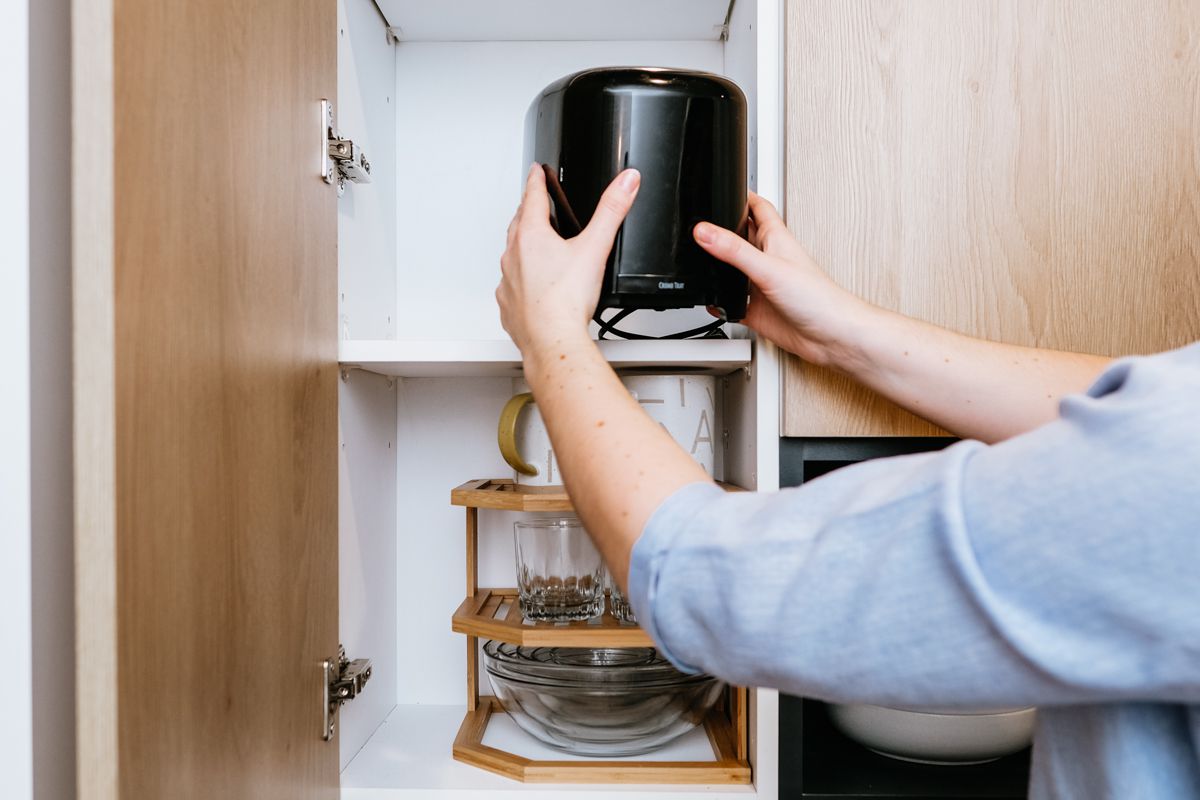

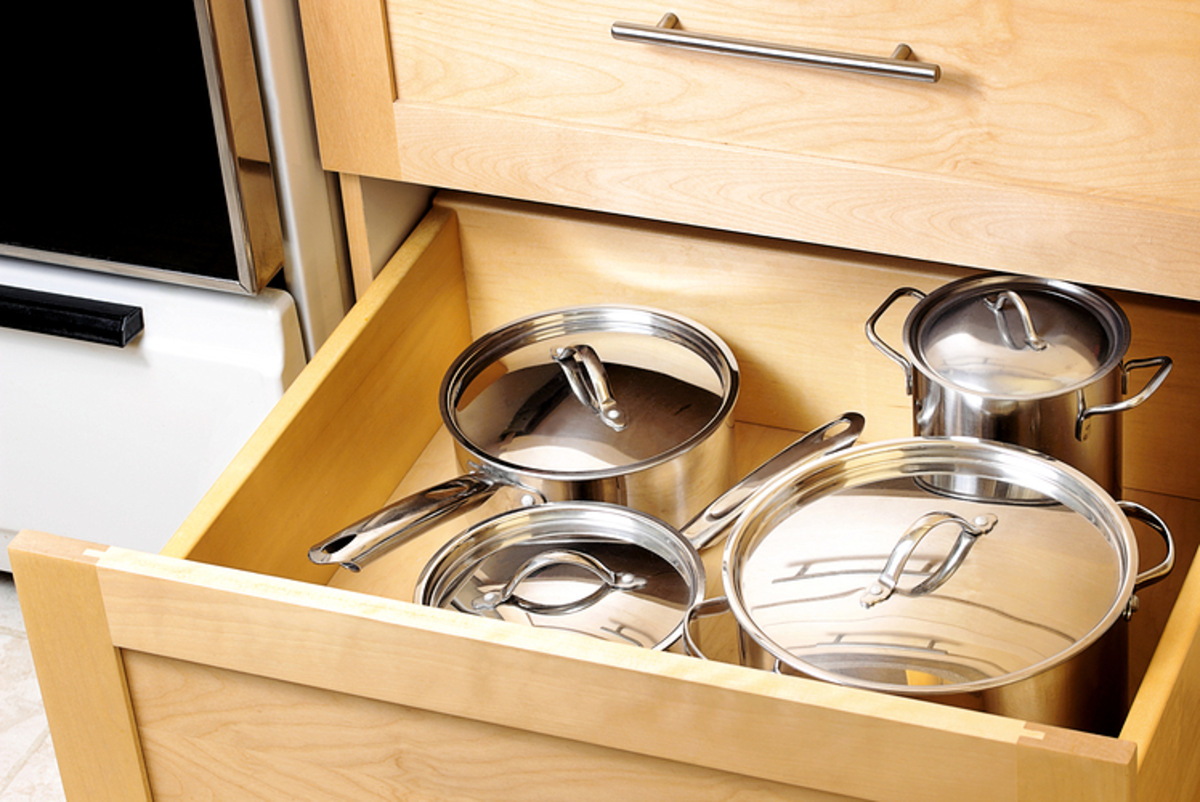
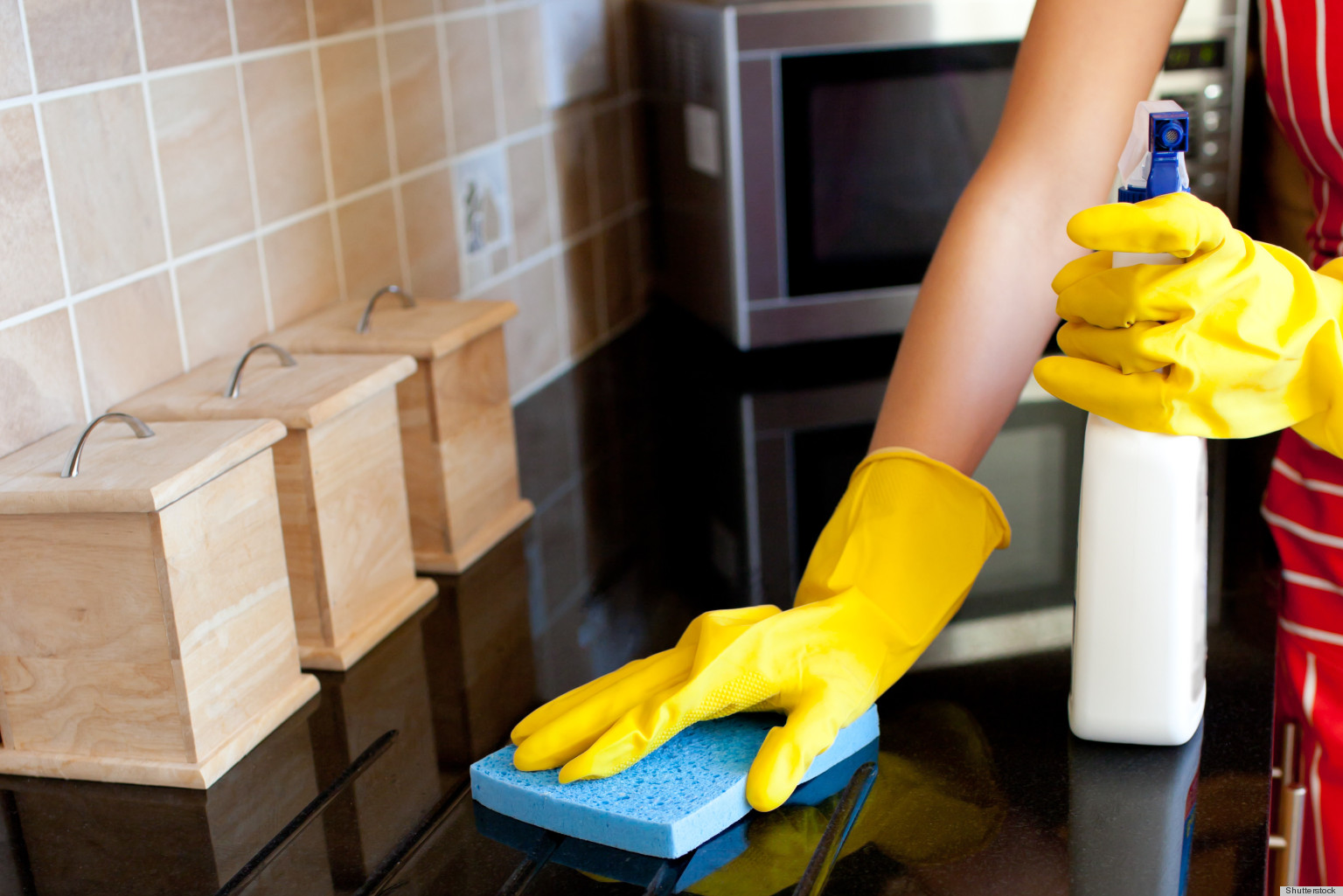

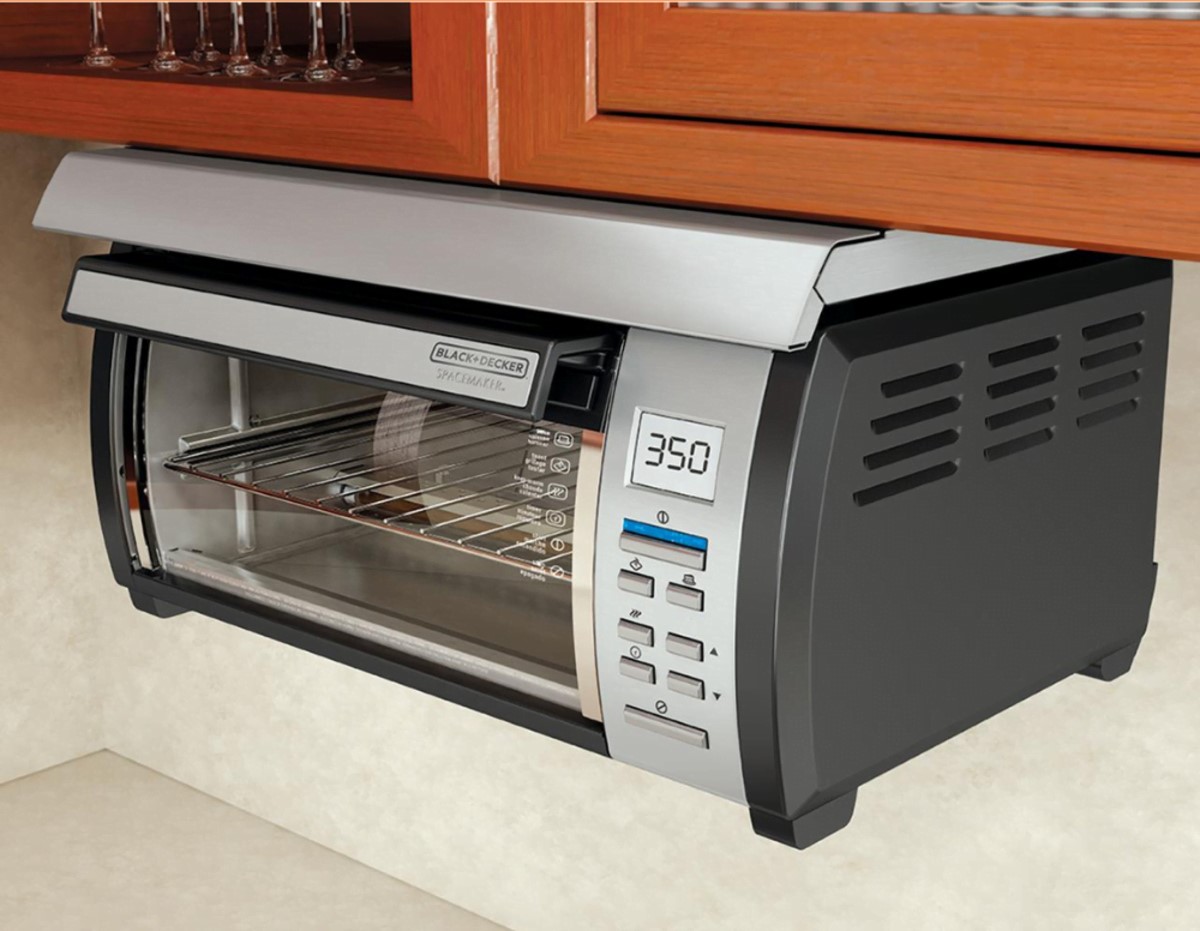


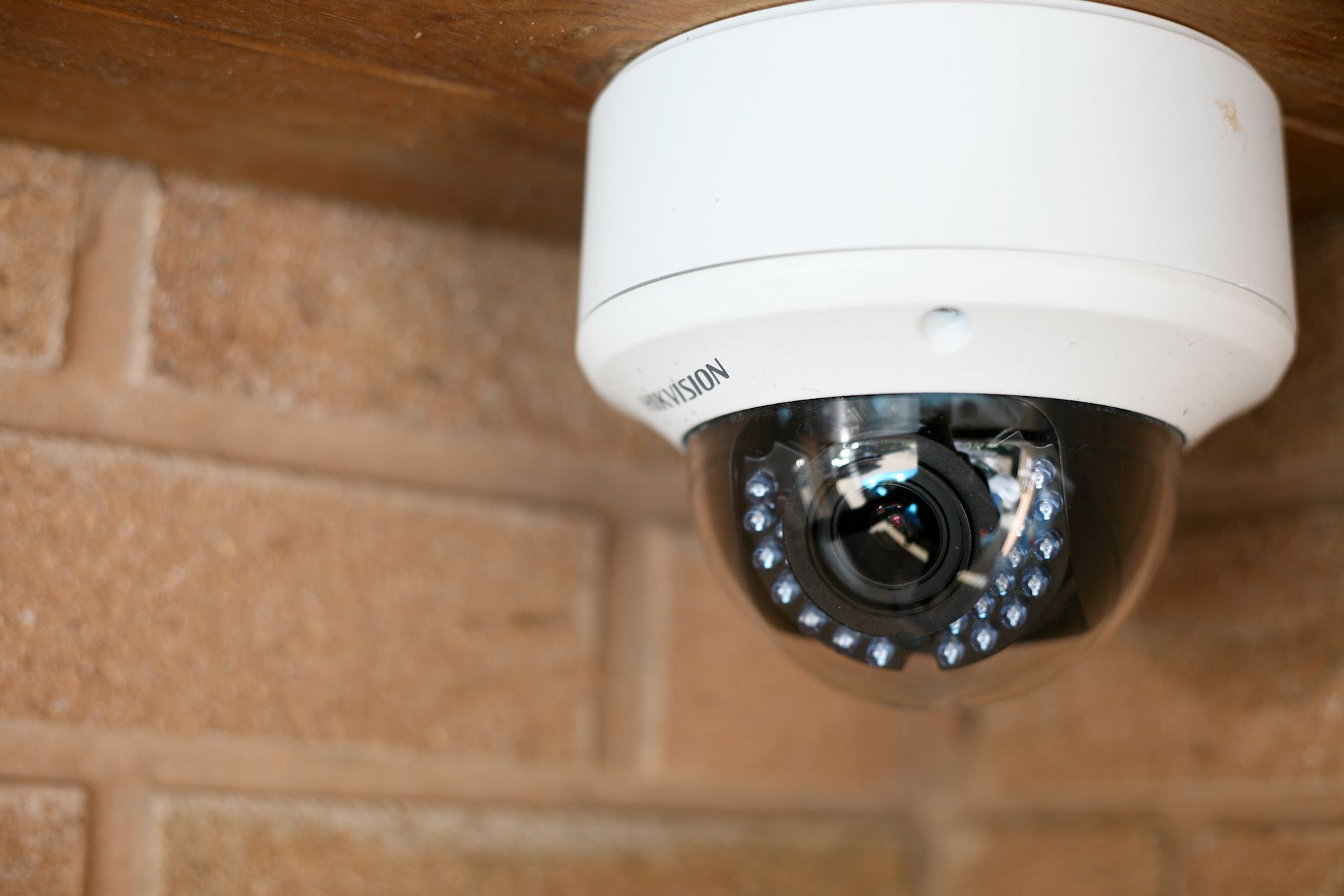
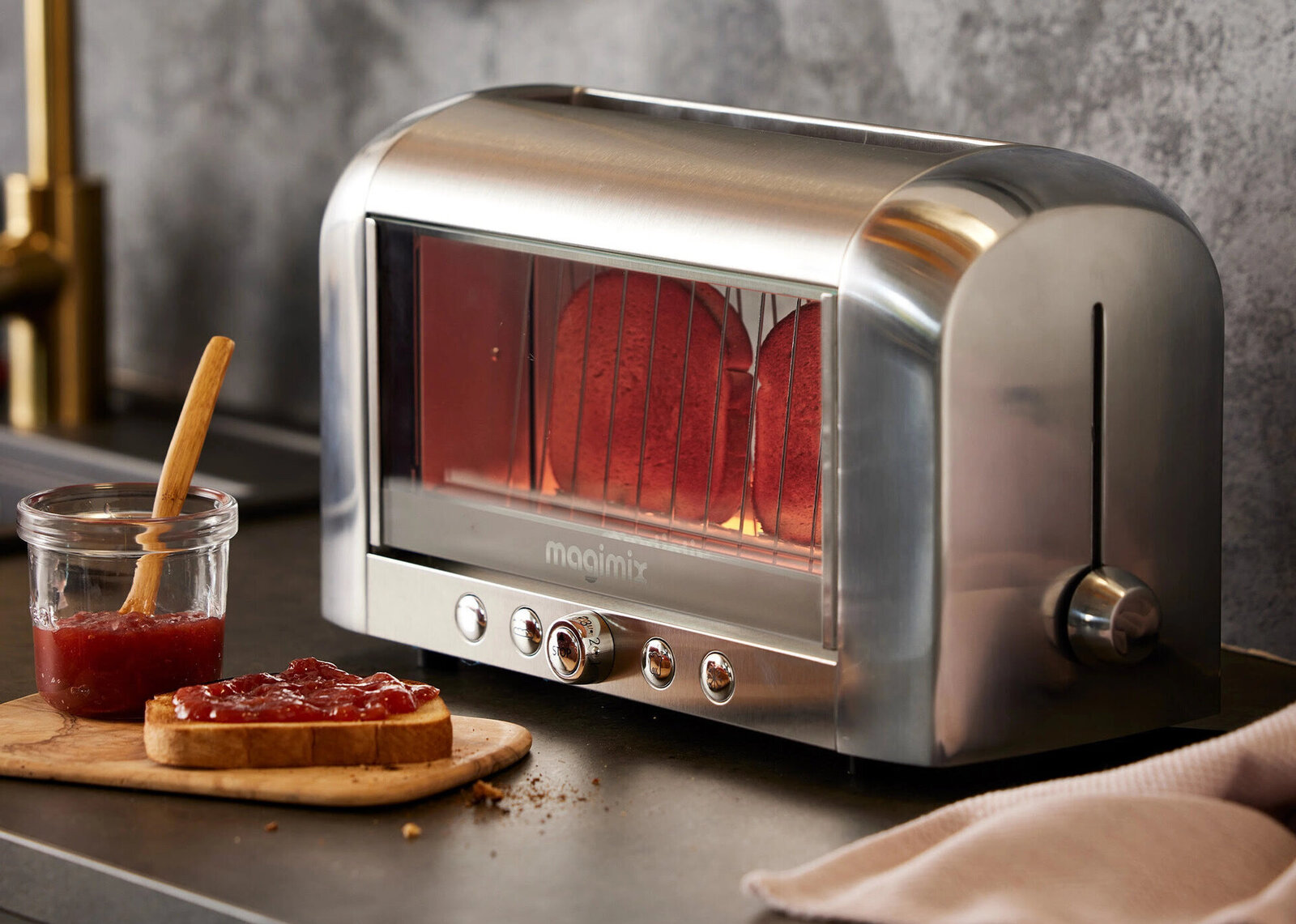
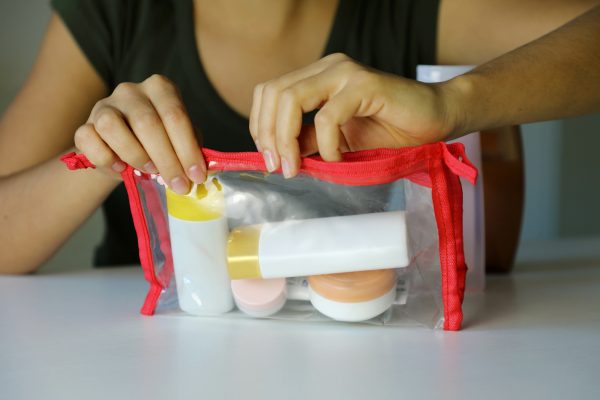
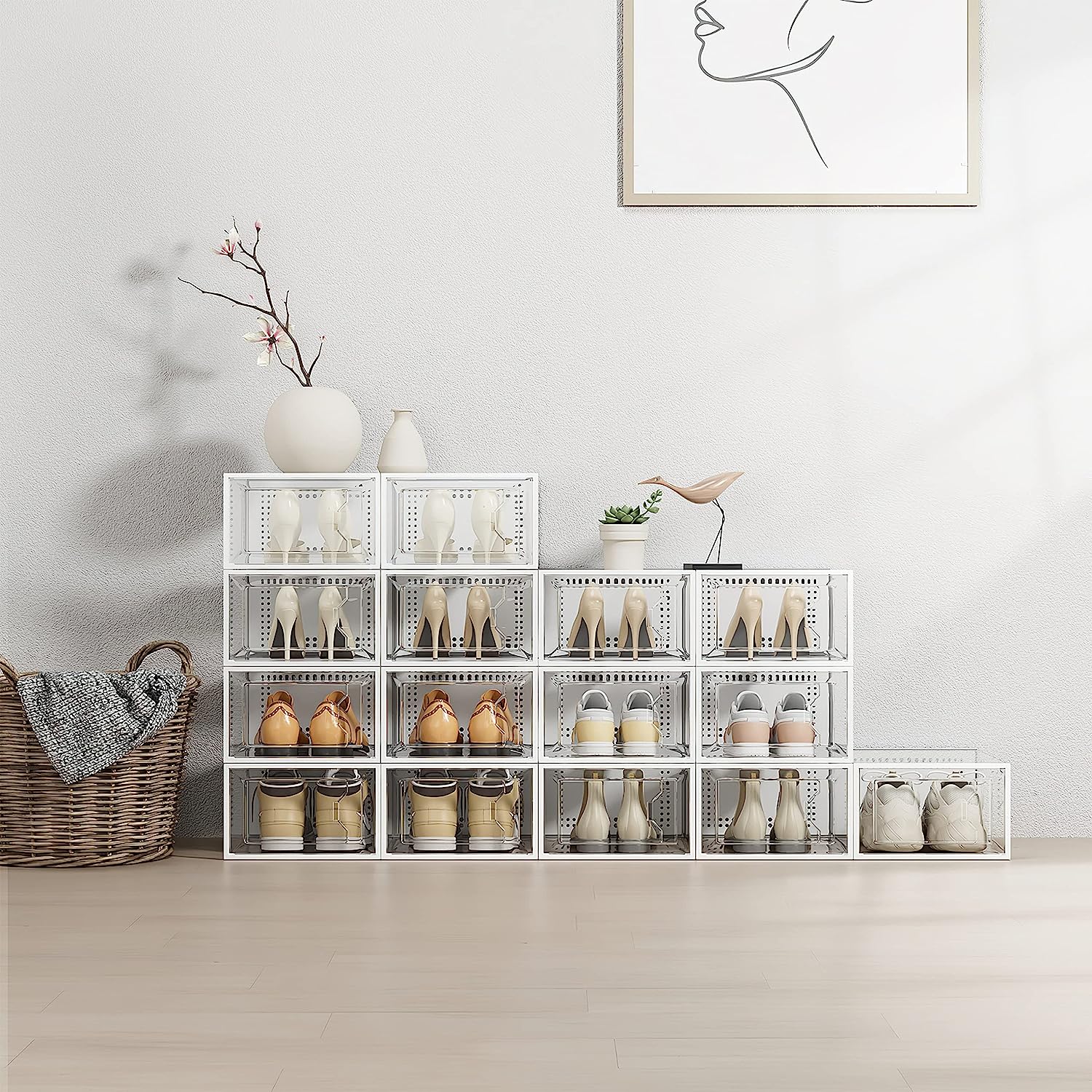


0 thoughts on “10 Things To Do Daily To Keep Kitchen Counters Clear”